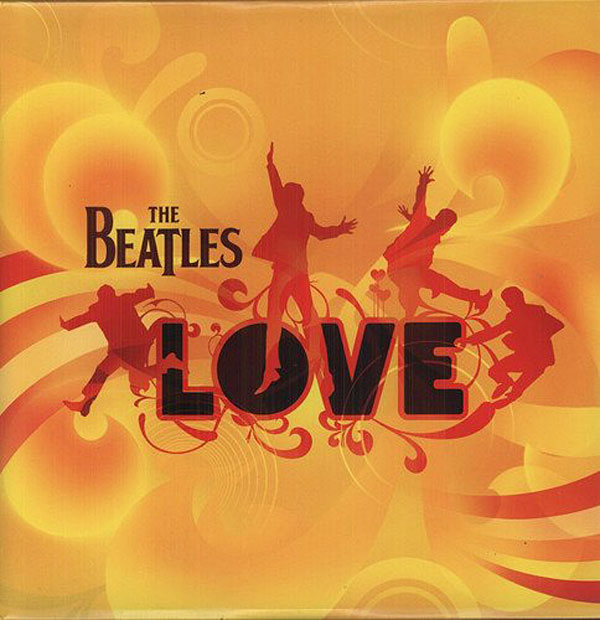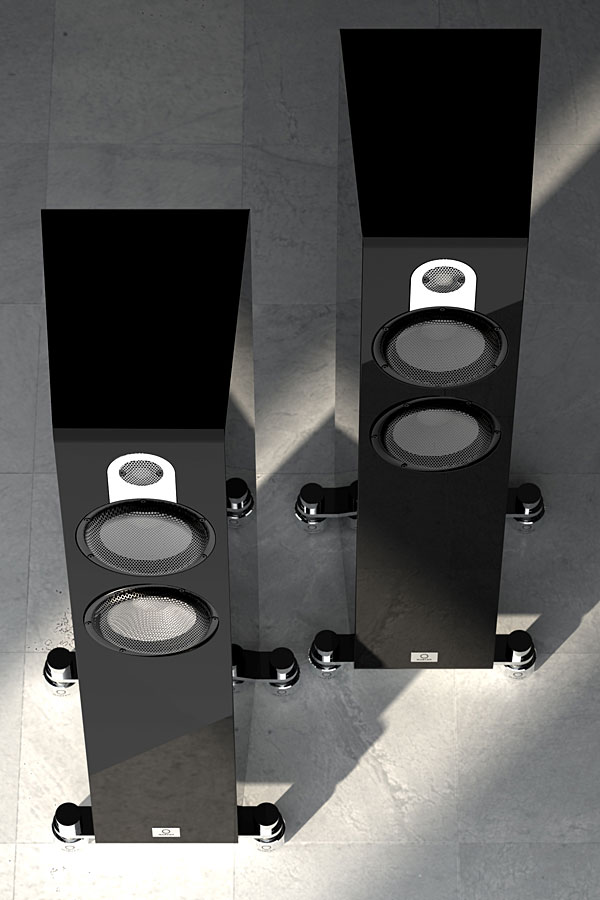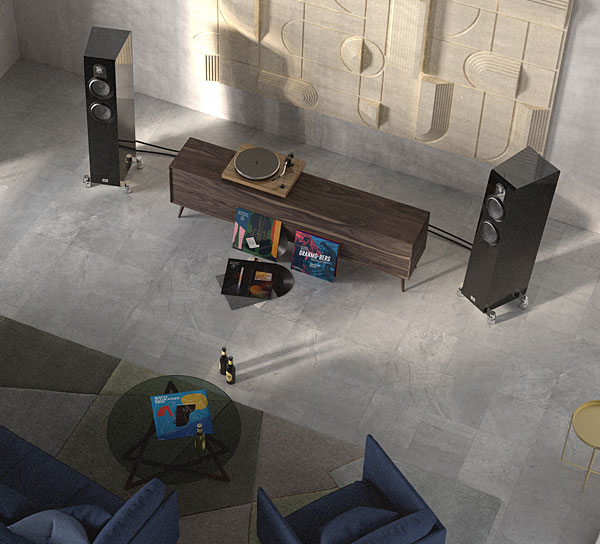| Columns Retired Columns & Blogs |
I suggest (edit: I removed my erroneous suggestion).

These Martens loved voices. On "John Henry," from WomanChild (16/44.1k FLAC, Mack Avenue/Tidal), Cécile McLorin Salvant was in the room with me, her image hanging in space between and slightly in front of the speakers. Richard Lehnert's speaking voice as he introduced the channel ID and phase tracks on Editor's Choice was reproduced without coloration. I noted in the track with the channels out of phase that Richard's phantom image was stably positioned to my left, well beyond the position of the left-hand speaker. I usually experience this phenomenon with time-coincident speakers; the Parker Trio's stereo imaging capability is superbly accurate.

Male voice tends to be revealing of problems in the lower midrange. To investigate problems in the upper midrange, I reach for piano recordings, where the sparseness of the frequencies in this region means that there is very little masking. A favorite piano recording is Mitsuko Uchida's 2010 performance of Beethoven's Piano Concerto No.4 with Simon Rattle conducting the Berlin Philharmonic (24/48k FLAC, Berliner Philharmoniker BPHR 180241). The sound of Uchida's piano was clean and uncolored, and, as she ran her fingers up and down the keyboard just after the start of the cadenza in the first movement, no notes stuck out beyond the others.

However, while the Parker Trios' diamond tweeters never drew attention to themselves with the Beethoven concerto, the top octaves sounding clean and clear, I felt that the low treble sounded a little more forward than I anticipated from the vocal recordings. Playing "My Man's Gone Now" from Miles Davis's 1981 album We Want Miles (16/44.1k ALAC, ripped from a Columbia CD), which admittedly has rough-sounding highs, corroborated this feeling. The Pass Labs preamplifier is superbly transparent, but what vestigial signature it has is too similar to that of the Parker Trio Diamond. Connecting the MBL DAC directly to the Parasound amplifiers evened out the low treble. Without the preamp, though, the lower mids became a touch too warm.
Continuing my auditioning with this change in the setup, I focused on the low frequencies. My Fender bass guitar on the Editor's Choice tracks sounded well-defined, without any upper-bass boom. And again, the image of the out-of-phase instrument was unambiguously placed well beyond the position of the left-hand speaker.
Speaking of bass guitar: The Martens reproduced the young Marcus Miller's fuzzed instrument on "My Man's Gone Now" very well; Roon's Radio function followed this with Brian Bromberg's "Teen Town" from Jaco, his tribute to the late bass guitar genius Jaco Pastorius (16/44.1k FLAC, Mack Avenue/Tidal). Bromberg duets with himself on this track, playing the melody at half-speed on a full-bodied double bass and interjecting double-speed bass guitar lines. Both instruments were presented by the Parker Trios with superb weight and clarity. This was also true with the high-level kickdrum and double bass on Cécile McLorin Salvant's "John Henry." Too often, reflex-loaded speakers lack clarity in the midbass, but this was not the case with the Trios.
Unlike the small standmount speakers that work well in my room, which is why I like them, the Marten Parker Trio Diamonds got the physical scale of larger-scale music right, including orchestral recordings. As I was writing this review, Editor Jim Austin sent me a preview of Rob Schryer's review of Focal's Aria K2 936 loudspeaker. Rob mentions using the excerpt from my 1984 recording of Elgar's The Dream of Gerontius that appears on Stereophile's no-longer-available Test CD 2 (STPH004-2 footnote 1).

I had been invited by the late Peter J. Walker of Quad to record this performance by his local orchestra accompanying no fewer than 200 singers in England's Ely Cathedral, in a performance celebrating the 50th anniversary of the composer's death. I was eagerly anticipating making the recording in the cathedral's superbly supportive acoustic and had scoped out what I felt would be the optimal position for Calrec's then-new Soundfield single-point microphone. Using the controller for the microphone's four capsules, I was able to synthesize a crossed, coincident pair of figure-8 microphones to make the stereo recording. However, when I arrived to set up my gear, the cathedral staff insisted that I had to place the microphone 12' above conductor Christopher Brown's head.
As you can imagine, this position gave a very wide-angle view of the performers (footnote 2). This is exactly what I heard with the Marten Parker Trio Diamonds. The three vocal soloists, who were to the left and right of the conductor beneath the microphone, were set at the front of the soundstage, their positions stable and unambiguous. The orchestra appeared farther back, with every instrument or group of instruments again well-defined in space. The huge choir was spread left to right at the far rear of the soundstage. The accuracy of the imaging offered by these Martens was impressive.
I haven't mentioned dynamics. I kept being tempted to play music loud, though this meant that the huge bass drum hit 12 minutes before the end of Part Two of Gerontius scared the heck out of my cats, who were dozing on top of the speakers. The organ's low-frequency pedal notes in this work, played by the cathedral's music director, Arthur Wills, shook my room's walls.

The extended low end was not always a boon. The slow movement of my favorite recording of Elgar's Serenade for Strings, with Sir Adrian Boult conducting the London Philharmonic (16/44.1k ALAC, ripped from CD, EMI Classics 64013), was recorded in London's Kingsway Hall and is therefore plagued with noise from the nearby subway. The Parker Trios let me hear clearly how much rumble accompanies the music!
Conclusion
Neutrally balanced with extended lows, an uncolored midrange, clean, transparent highs, and stable, accurate stereo imaging, Marten's Parker Trio Diamond Edition is one of the best-sounding full-range loudspeakers I have auditioned in my room. Yes, at $36,990/pair it is expensive, but the Parker Trio Diamond rivals significantly pricier floorstanders from Göbel, Magico, and Tidal that I have reviewed in the past few years as well as the similarly priced models from Rockport and Vimberg (footnote 3). It is fair to note that the regular Trio gets close to the performance of the Diamond Edition in the midrange and bass, and if you have a room that is the same size as mine or smaller, Marten's Oscar Duo will give you a taste of what the pricier Martens offer. But that diamond tweeter is something special indeed.
Footnote 2: See the photos here.
Footnote 3: The Rockport Avior costs $40,500/pair. The Vimberg Mino costs $31,000–$38,500/pair depending on finish.

I suggest (edit: I removed my erroneous suggestion).

John Atkinson
Technical Editor, Stereophile

It was intended as constructive criticism.
Keep up the good work.

in a $37,000 speaker. Doesn’t appear to be from a cabinet vibration, is it from the passive radiators?
And excuse me asking, but if the speaker is on a wheeled dolly, why can’t you fully rotate it to measure +/-90°? I couldn’t understand the explanation.
Looks like the voiced it well by adding a dip at 3.2Hz to combat the wide off-axis dispersion.
The bookshelf Duo measured around it’s stated sensitivity, so odd that this is so much lower than spec and barely higher than the bookshelf, the tweeter (BD 25-6-258?) is likely not the limiting factor.

I suspect that is an internal modal resonance, a standing wave. The apparent path length is a little longer that the internal height because the path includes delays and detours around internal bracing, woofer chassis, suspension and motor structures, passive radiator chassis and suspension structures, etc.
Speed of sound is oft quoted at 68 degrees Fahrenheit at approximately 343_m/s, and is 344 at 71, 345 at 74, 346 at 77, and is primarily dependent on air temperature. Air temps inside the enclosure will be warmer than room air while the loudspeaker is operating.
(343)/(140*2)= 1.225 meters
(344)/(140*2)= 1.229 meters
(345)/(140*2)= 1.232 meters
(346)/(140*2)= 1.236 meters
You can see some associated resonance in the passive radiator nearfield response, and more resonances an octave higher. The second order resonance is not showing in the impedance curve, perhaps because the geometry is not imparting a pressure node on the woofers where it would feed through the motor and be reflected in the impedance Though the lower woofer does appear as though it should be near a pressure node, unseen internal structures may be dictating something else.
You won't see that in a PR loaded subwoofer where internal paths are small relative to wavelength. But you will see it where PRs are utilized to load midwoofers operating at higher frequencies, shorter wavelengths (shorter than subwoofer wavelegths) in the taller enclosed air volume of a floor standing loudspeaker of a design lacking internal damping located in or near the velocity node positions of the internal modal resonances of the enclosure. Suitable damping is key, essentially using internal airflow resistance in those velocity nodes, effective at the frequencies of interest, but almost invisible at lower frequencies nearer the PR tuning. An example would be some SAE F13 sheepswool techical felt (maybe in combination with some Roxul Rockboard 80) sandwiched between a closely spaced pair of windowed shelf braces and some grill mesh or perforated steel for added support located at roughly 1/3 of the internal height where it would damp fundamental and second order standing waves in that path.

excuse me asking, but if the speaker is on a wheeled dolly, why can’t you fully rotate it to measure +/-90°? I couldn’t understand the explanation.
The problem stems from the fact that at angles greater than 45 degrees, there were reflections from nearby surfaces in my listening room that compromised the measurement.
John Atkinson
Technical Editor, Stereophile

Dear John Atkinson, at the first paragraph you wrote "at 6990$ those speakers aren't inexpensive..." and I was like, wow finally some sense! And then at the second page of the article it turned out to be 36,990$!!! And then I was like, ho, right.

The $6990 speakers were Oscar Duo's from a previous review. As JA describes in the early part of the article, we were first planning to review a much cheaper version but ended up with the version with the diamond tweeter, which is much more expensive. Very likely, the cheaper version is almost as good.
Jim Austin, Editor
Stereophile

I read the article again... I got it now... Would have been nice thou at 6995$ oh well :)

New loudspeakers come and go, often at exaggerated prices. 35 Years ago I had secured a pair of Yamaha NS-1000M's. For me they are still the best loudspeakers money can buy. Provided of course they are driven by first rate, preferably Class A amplifiers. Funny, their list price was only $1500.

Technology has advanced. You should listen to some of the newer better loudspeakers.

Not as much as you think...

Changes are RADICAL today compared to the 1970s when the NSM-1000M was designed. Materials improve, understanding of the physics improved, computer modeling/design software has made HUGE, nearly unimaginable changes compared to what was possible in the 1970s. Crossover design is massively better today than 50 years ago. Today's high quality electronic components did not exist in the 1970s. NON-DISCLAIMER: This is written by someone who recommended Yamaha NSM-1000s to three different friends in the 1970s who all loved them after their initial freak-out at the cost of them compared to the guy in the parking lot with a van full of big $25 speakers. I was well aware of how good NSM-1000s were in the 1970s. Why didn't I have NSM-1000s of my own? I was already a high-end idiot with speakers that cost 2.5 or 3 times more than NSM-1000s.

Computer software only mimics the principles and formulas published half a century ago.
Do you mean no greatly engineered products, structures or buildings could be built before computers?
As a structural engineer, part time professional software developer and an amateur loudspeaker system designer I tend to disagree. Nothing could be further from the truth.
BTW, Yamaha NS-1000Ms were not designed as an upgrade for white van loudspeakers.
They were produced as reference monitor speakers for highest quality recording studios worldwide and discerning audiophiles, regardless of price. They have highest technology in design and materials.

Loudspeaker enclosures are still designed with the formulas given by Thiele & Small (published 1960-1970). Crossovers are still designed by formulas given by Butterworth, Linkwitz-Riley, etc (equally old tech).
Actually, not much is new. (Except greedy manufacturers...)
And new doesn't always equal to better.
If you'll ever listen to Yamaha NS-1000M's, you'll understand what I mean.

Hey!
JA: "I kept being tempted to play music loud, though this meant that the huge bass drum hit 12 minutes before the end of Part Two of Gerontius scared the heck out of my cats, who were dozing on top of the speakers."
Reading that gave me a good chuckle, only cat owners would understand. Reminded me of my old cat, he used to hangout on my speakers also. Luckily he was careful getting up and down so I didn't have to worry about he tipping my speaker over.

Dear JA
I was wondering if you had any thoughts/experience with the quintets and how they compared to the trios?
Thx

I was wondering if you had any thoughts/experience with the quintets and how they compared to the trios?
I am afraid that I have never heard the Quintet.
John Atkinson
Technical Editor, Stereophile